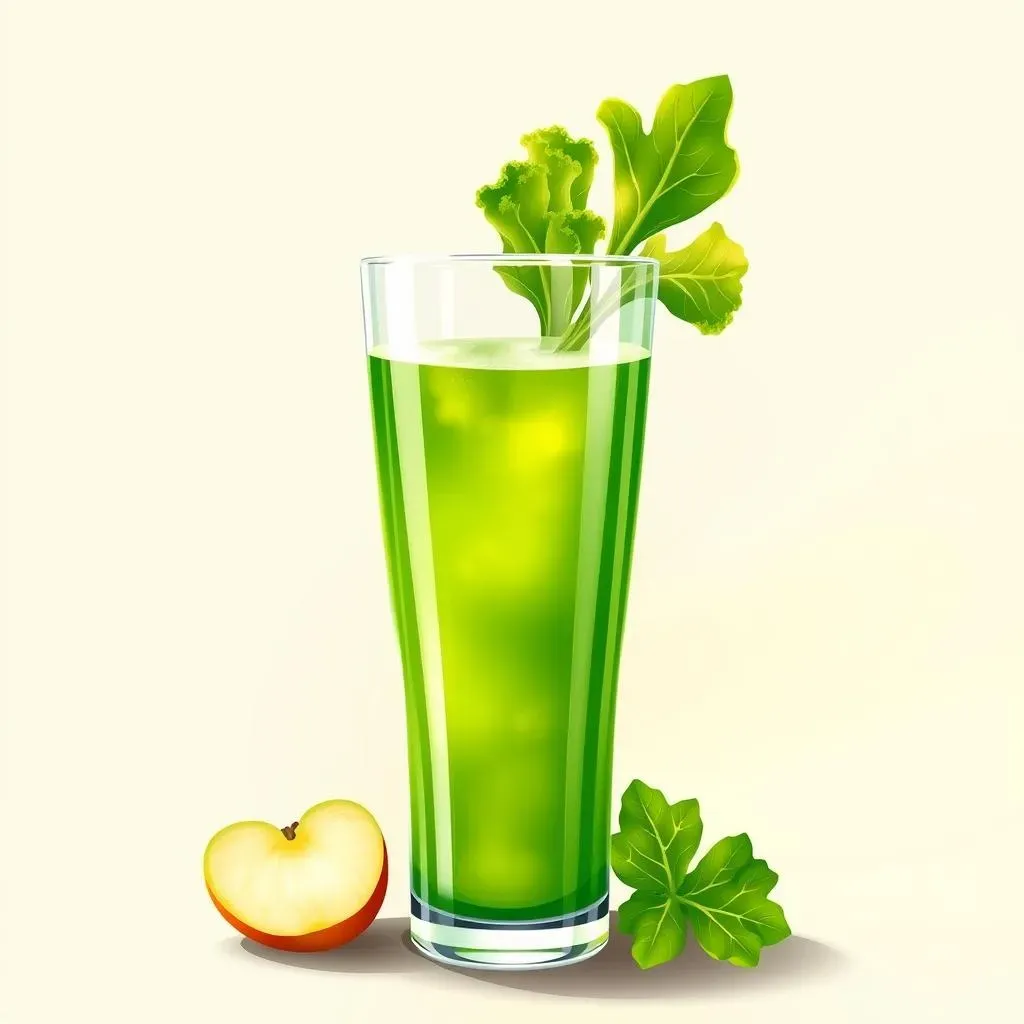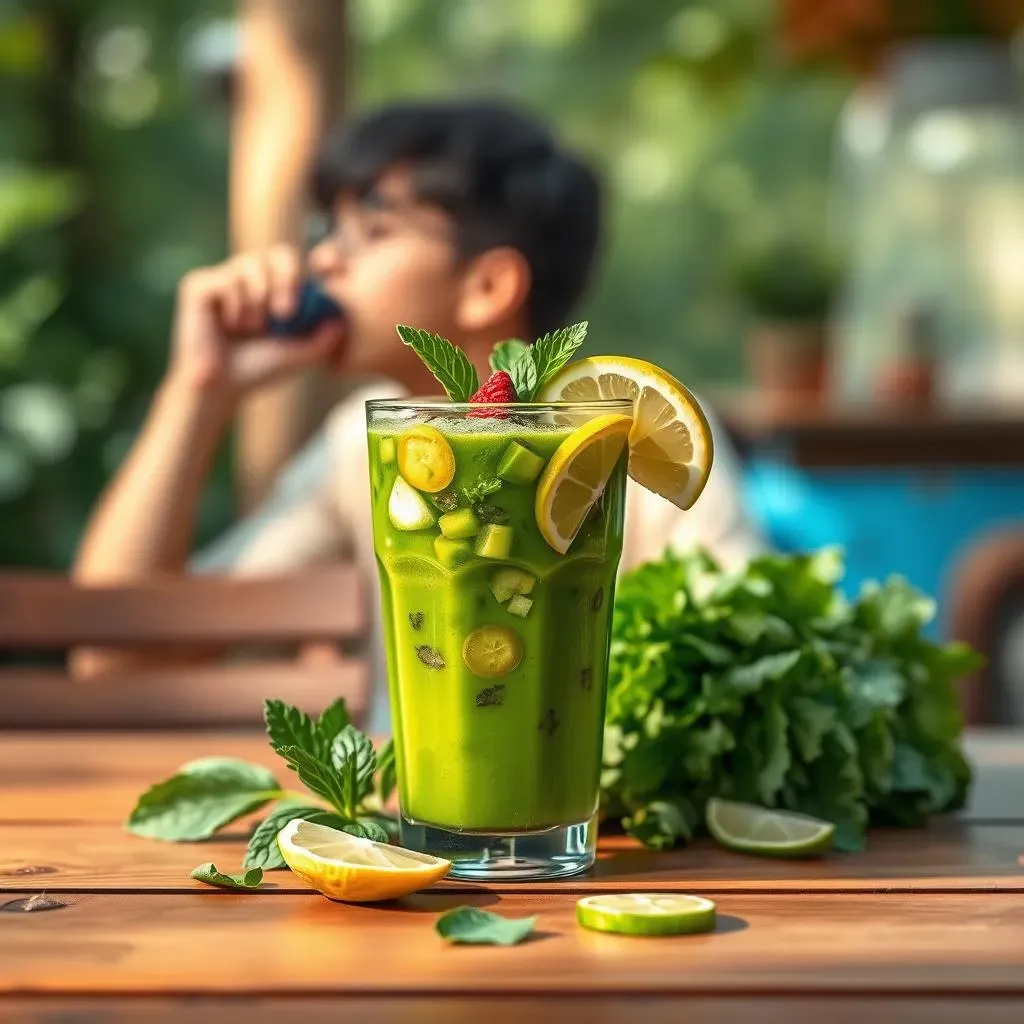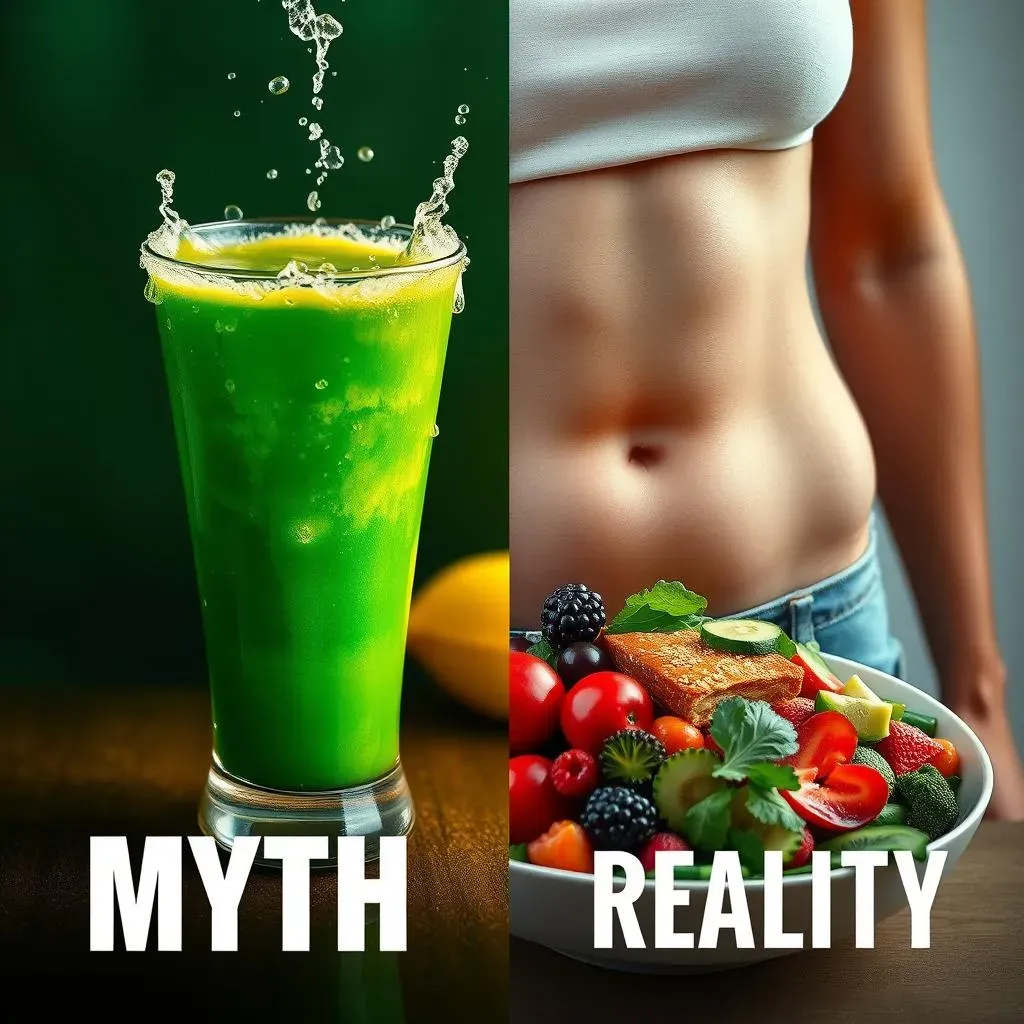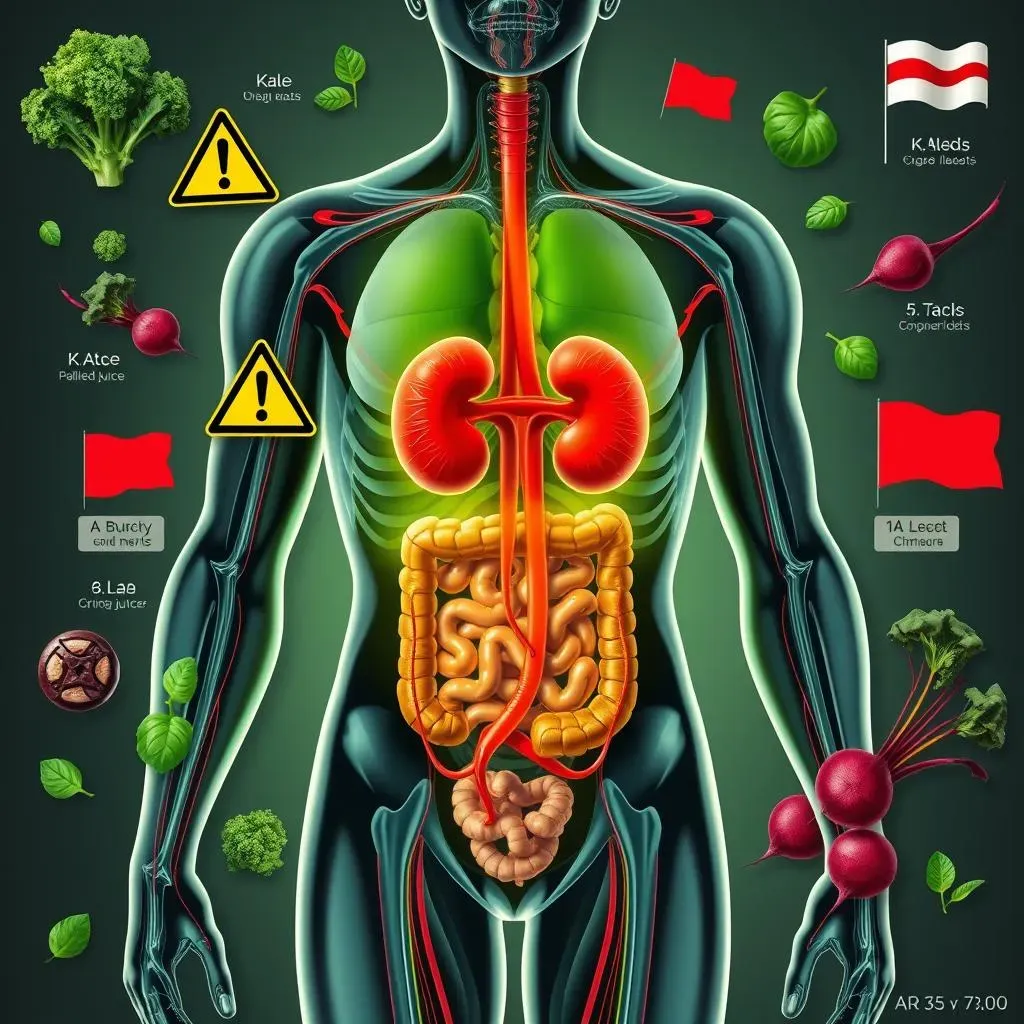Table of Contents
In a world obsessed with quick fixes and instant results, the green detox juice has emerged as a vibrant symbol of health and well-being. But beyond the hype and Instagram-worthy photos, have you ever stopped to ask: what does a green detox juice do, really? Is it a magical elixir that will cleanse your body of all its sins, or just another fleeting health fad? This article dives deep into the murky green waters of detox juices to uncover the truth. We'll explore the ingredients that typically make up these concoctions, examine the potential benefits they offer, and, most importantly, debunk some of the wilder claims surrounding their detoxifying powers. From understanding the science (or lack thereof) behind detoxing to navigating the potential downsides and risks, we'll equip you with the knowledge you need to make informed decisions about incorporating green juice into your diet. Finally, we'll share practical tips and delicious recipes to help you enjoy green juice responsibly and effectively, ensuring it complements a healthy lifestyle rather than replacing it.
What Exactly is Green Detox Juice? Unpacking the Ingredients

What Exactly is Green Detox Juice? Unpacking the Ingredients
The Green Spectrum: Core Vegetables
So, what exactly goes into this vibrant green concoction? At its heart, green detox juice is a blend of leafy green vegetables, often combined with fruits and other ingredients to enhance flavor and nutritional value. Think of it as a concentrated shot of plant-based goodness.
The base typically consists of vegetables like spinach, kale, collard greens, and romaine lettuce. These provide a wealth of vitamins (A, C, K), minerals (iron, calcium, potassium), and antioxidants. Some recipes also incorporate vegetables like celery, cucumber, and parsley for added hydration and a milder flavor profile. The specific combination of greens can vary widely depending on personal preference and the desired health benefits.
Sweetening the Deal: Fruits and Other Add-Ins
Let's be honest, a pure blend of leafy greens can be a bit intense for some palates. That's where fruits come in! Adding fruits like green apples, lemon, and berries can naturally sweeten the juice and make it more palatable. These additions also contribute extra vitamins, antioxidants, and fiber (though juicing does reduce the fiber content compared to eating whole fruits).
Beyond fruits and vegetables, some recipes include ingredients like ginger, turmeric, or spirulina to further boost the nutritional profile and add unique flavors. Ginger, for example, is known for its anti-inflammatory properties, while turmeric contains curcumin, a powerful antioxidant. Spirulina, a type of blue-green algae, is a complete protein source and a rich source of vitamins and minerals.
Decoding the Label: Store-Bought vs. Homemade
While making your own green detox juice allows for complete control over the ingredients, many people opt for store-bought versions for convenience. However, it's crucial to read the labels carefully. Many commercially prepared green juices contain added sugars, artificial sweeteners, and preservatives, which can negate some of the health benefits.
Ideally, look for juices that are made with organic ingredients and contain no added sugars or artificial additives. Pay attention to the order of the ingredients listed – the ingredients listed first are present in the highest concentration. If fruit is listed before vegetables, the juice may be higher in sugar than you realize. Making your own ensures you know exactly what you're putting into your body.
Ingredient | Typical Benefits | Considerations |
|---|---|---|
Spinach | High in vitamins A & K, iron | Can be high in oxalates |
Kale | Rich in antioxidants, vitamins C & K | Strong flavor, may need balancing |
Green Apple | Adds sweetness, fiber | Increases sugar content |
Ginger | Anti-inflammatory, aids digestion | Can be spicy |
The Purported Benefits: What Does a Green Detox Juice Do For Your Body?

The Purported Benefits: What Does a Green Detox Juice Do For Your Body?
Nutrient Powerhouse: Vitamins and Minerals
One of the primary reasons people turn to green detox juices is for the concentrated dose of vitamins and minerals they provide. Think of it as a shortcut to getting your daily recommended intake of essential nutrients. These juices are packed with vitamins A, C, and K, which are crucial for immune function, skin health, and blood clotting. They also boast minerals like iron, calcium, and potassium, vital for energy production, bone health, and maintaining healthy blood pressure. By flooding your system with these nutrients, green juice aims to support overall well-being and vitality.
But it's not just about the individual vitamins and minerals; it's about the synergistic effect of these nutrients working together. For example, vitamin C enhances iron absorption, while vitamin K works with calcium to strengthen bones. This intricate interplay of nutrients is what makes green juice a potentially powerful tool for optimizing health.
Antioxidant Armor: Fighting Free Radicals
Green vegetables are brimming with antioxidants, compounds that protect your cells from damage caused by free radicals. Free radicals are unstable molecules that can contribute to inflammation, aging, and various chronic diseases. Antioxidants neutralize these free radicals, acting as a shield against cellular damage. Green detox juices, with their high concentration of green vegetables, offer a potent source of these protective compounds.
Specific antioxidants found in green juice include flavonoids, carotenoids, and polyphenols. These antioxidants have been linked to a reduced risk of heart disease, cancer, and neurodegenerative diseases. By incorporating green juice into your diet, you're essentially arming your body with a powerful defense system against the damaging effects of free radicals.
Hydration Hero: Supporting Detoxification
While the term "detox" can be misleading, green juice can certainly support your body's natural detoxification processes simply by keeping you hydrated. Water is essential for flushing out waste products and toxins through the kidneys and liver, the body's primary detoxification organs. Green juice, with its high water content, can contribute to your daily fluid intake and promote optimal detoxification.
Furthermore, some ingredients commonly found in green juice, such as celery and cucumber, have diuretic properties, meaning they can help increase urine production and further aid in the elimination of waste. While green juice shouldn't be considered a miracle cure for detoxification, it can be a valuable addition to a healthy lifestyle that supports the body's natural cleansing mechanisms. It's important to remember that your liver and kidneys are already working hard to detoxify your body, and staying hydrated is one of the best ways to support their function.
Potential Benefit | How it Works | Important Note |
|---|---|---|
Increased Nutrient Intake | Concentrated source of vitamins & minerals | Doesn't replace whole foods |
Antioxidant Protection | Fights free radicals, reduces inflammation | Variety of greens is key |
Hydration Support | Aids in waste elimination | Not a substitute for water |
Debunking the Myths: What a Green Detox Juice Doesn't Do

Debunking the Myths: What a Green Detox Juice Doesn't Do
The "Detox" Delusion: It's Not a Magic Bullet
Let's tackle the elephant in the room: the word "detox." While green juice can support your body's natural detoxification processes, it's crucial to understand that it's not a magical elixir that will instantly rid your body of all toxins. Your liver and kidneys are already highly efficient detoxification organs, working tirelessly to filter out waste and harmful substances. Green juice can provide them with additional nutrients and hydration, but it cannot replace their function or undo the damage caused by unhealthy lifestyle choices.
The idea that you can simply drink a green juice for a few days and magically erase the effects of a poor diet, lack of exercise, or excessive alcohol consumption is simply not supported by scientific evidence. True detoxification is a long-term process that involves adopting a healthy lifestyle, including a balanced diet, regular exercise, adequate sleep, and stress management. Green juice can be a part of that equation, but it's not the whole solution.
Weight Loss Wonders? Managing Expectations
Many people turn to green juice with the expectation that it will lead to rapid weight loss. While green juice can be a low-calorie and nutrient-rich addition to your diet, it's not a guaranteed weight-loss solution. Weight loss ultimately comes down to creating a calorie deficit – burning more calories than you consume. Green juice can help with this by providing a feeling of fullness and reducing cravings for unhealthy foods, but it's not a miracle weight-loss potion.
Furthermore, because juicing removes the fiber from fruits and vegetables, it can lead to a spike in blood sugar levels, which can actually hinder weight loss efforts. Fiber helps to slow down the absorption of sugar into the bloodstream, preventing these spikes and promoting a feeling of satiety. If weight loss is your primary goal, it's important to focus on consuming whole fruits and vegetables, which provide both nutrients and fiber, and to incorporate regular exercise into your routine.
Fiber Faux Pas: The Missing Link
One of the biggest drawbacks of green juice is its lack of fiber. Fiber is an essential nutrient that plays a crucial role in digestive health, blood sugar control, and weight management. It helps to keep you feeling full, promotes regular bowel movements, and lowers cholesterol levels. When you juice fruits and vegetables, you're essentially removing the fiber, leaving behind only the juice and pulp.
While the juice itself contains vitamins, minerals, and antioxidants, it lacks the bulk and beneficial properties of fiber. For this reason, it's important to consume green juice as a supplement to your diet, not as a replacement for whole fruits and vegetables. If you're looking to boost your fiber intake, focus on eating plenty of whole fruits, vegetables, legumes, and whole grains. You can also add the pulp from your juicing to smoothies, soups, or baked goods to increase their fiber content.
Myth | Reality |
|---|---|
Green juice is a magic detoxifier. | It supports natural detox processes but doesn't replace liver/kidney function. |
Green juice guarantees weight loss. | It can aid weight loss as part of a calorie-controlled diet. |
Green juice provides all the nutrients you need. | It's a supplement, not a replacement for whole foods, especially fiber. |
Potential Downsides and Risks of Green Juice Detoxes

Potential Downsides and Risks of Green Juice Detoxes
Oxalate Overload: A Kidney Concern
While green vegetables are undeniably healthy, some, like spinach, kale, and beet greens, are high in oxalates. Oxalates are naturally occurring compounds that, in excessive amounts, can bind to calcium in the kidneys and form kidney stones. While most people can process oxalates without issue, those with a history of kidney problems or a predisposition to kidney stones may need to be cautious about consuming large quantities of high-oxalate greens in juice form.
The juicing process concentrates these oxalates, making it easier to consume a large amount in a short period of time. Symptoms of oxalate overload can include abdominal pain, nausea, and difficulty urinating. If you have any concerns about your kidney health, it's best to consult with your doctor before embarking on a green juice detox or consuming large quantities of high-oxalate greens.
Blood Sugar Blues: A Glycemic Rollercoaster
As mentioned earlier, juicing removes the fiber from fruits and vegetables, which can lead to a rapid spike in blood sugar levels. This is particularly concerning for individuals with diabetes, insulin resistance, or other blood sugar conditions. When you consume a green juice that's high in fruit or naturally sweet vegetables like carrots or beets, the sugar is absorbed into the bloodstream much faster than if you were to eat the whole fruit or vegetable.
This rapid rise in blood sugar can lead to energy crashes, increased cravings, and potentially long-term health complications. If you have blood sugar concerns, it's essential to limit your intake of green juice, especially those that contain a lot of fruit. Opt for vegetable-based juices and monitor your blood sugar levels closely. It's always a good idea to consult with your doctor or a registered dietitian for personalized advice.
Digestive Distress: Tummy Troubles
For some individuals, consuming large amounts of green juice can lead to digestive discomfort, such as bloating, gas, and diarrhea. This is often due to the high concentration of certain compounds found in green vegetables, such as glucosinolates in cruciferous vegetables like kale and broccoli. These compounds can be difficult for some people to digest, especially in large quantities.
Additionally, the sudden influx of nutrients and fluids can overwhelm the digestive system, leading to temporary disruptions. If you experience digestive discomfort after drinking green juice, try reducing the amount you consume or diluting it with water. You can also try incorporating digestive enzymes into your diet to aid in the breakdown of these compounds. If the symptoms persist, it's best to consult with your doctor to rule out any underlying digestive issues.
Medication Mayhem: Interactions to Watch Out For
Green juice can potentially interact with certain medications, particularly blood thinners like warfarin. Green leafy vegetables are high in vitamin K, which plays a crucial role in blood clotting. Warfarin works by interfering with vitamin K's action, so consuming large amounts of green juice can potentially reduce the effectiveness of the medication. This can lead to dangerous blood clots or other complications.
If you're taking any medications, it's essential to talk to your doctor or pharmacist before incorporating green juice into your diet. They can advise you on potential interactions and help you adjust your medication dosage if necessary. It's always better to err on the side of caution when it comes to your health and medication management.
Potential Risk | Explanation | Mitigation Strategy |
|---|---|---|
Oxalate Overload | Kidney stone formation | Limit high-oxalate greens, stay hydrated |
Blood Sugar Spikes | Rapid rise in blood sugar levels | Choose vegetable-based juices, monitor blood sugar |
Digestive Distress | Bloating, gas, diarrhea | Reduce amount, dilute with water, digestive enzymes |
Medication Interactions | Interference with blood thinners | Consult with your doctor or pharmacist |
Making Green Detox Juice Work For You: Tips and Recipes

Making Green Detox Juice Work For You: Tips and Recipes
Start Slow and Listen to Your Body
Don't jump into a full-blown green juice cleanse right away! Start by incorporating a small serving of green juice (4-8 ounces) into your diet a few times a week. Pay attention to how your body responds. Are you feeling energized and refreshed, or are you experiencing digestive discomfort? Adjust the amount and frequency based on your individual needs and tolerance. Remember, it's not a race! The goal is to find a sustainable way to incorporate green juice into your lifestyle, not to shock your system.
Also, consider the timing of your green juice consumption. Some people find that drinking it on an empty stomach enhances nutrient absorption, while others prefer to have it with a meal to minimize blood sugar spikes. Experiment to see what works best for you. If you're new to green juice, it's always a good idea to consult with your doctor or a registered dietitian before making any significant changes to your diet.
Crafting the Perfect Blend: Recipe Ideas
The key to enjoying green juice is to find a recipe that you actually like! Don't be afraid to experiment with different combinations of ingredients until you discover your perfect blend. Here are a few ideas to get you started:
- The Classic Green: Spinach, kale, cucumber, green apple, lemon
- The Tropical Twist: Spinach, mango, pineapple, ginger, lime
- The Beet Boost: Beet greens, carrot, celery, ginger, lemon
- The Berry Blast: Spinach, mixed berries, cucumber, mint
Remember to adjust the ratios of ingredients to suit your taste preferences. If you find a particular green too bitter, add more fruit to balance it out. You can also add herbs like mint or parsley for a refreshing flavor. The possibilities are endless!
Beyond the Juice: Using the Pulp
Don't throw away that leftover pulp! It's packed with fiber and nutrients that can be used in a variety of creative ways. Add it to smoothies, soups, or stews for extra bulk and nutrition. You can also use it to make veggie burgers, crackers, or even dog treats! Get creative and find ways to incorporate the pulp into your cooking to minimize waste and maximize the nutritional value of your green juice.
Another option is to compost the pulp. Composting is a great way to recycle organic waste and create nutrient-rich soil for your garden. By composting your green juice pulp, you're not only reducing waste but also giving back to the environment.
Tip | Description |
|---|---|
Start Slow | Introduce green juice gradually to your diet. |
Experiment with Recipes | Find combinations you enjoy. |
Use the Pulp | Don't waste the fiber; add it to other recipes or compost it. |
The Green Verdict: Making Informed Choices About Detox Juice
So, what's the final word on green detox juice? It's not a miracle cure-all, and it certainly shouldn't be your sole strategy for a healthy lifestyle. However, when consumed responsibly and as part of a balanced diet, green juice can be a convenient and delicious way to boost your nutrient intake. Focus on whole, unprocessed foods, prioritize fiber, and listen to your body's signals. If you're considering a green juice detox, approach it with realistic expectations and be mindful of potential risks. Ultimately, the key to well-being lies in sustainable habits and a holistic approach to health, where green juice is just one small, vibrant piece of the puzzle.